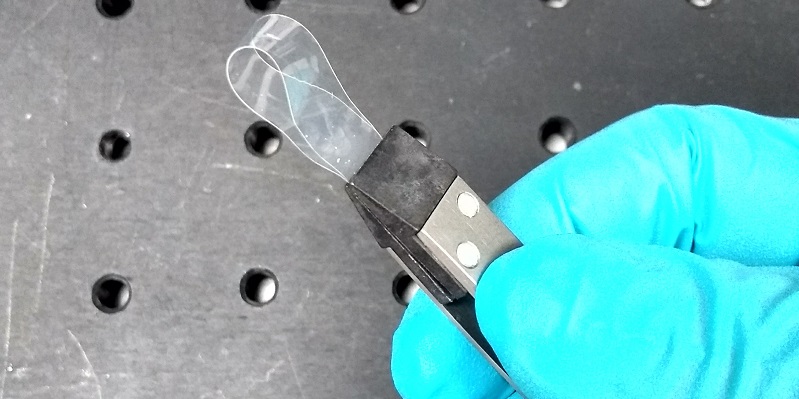
Researchers from the University of Leeds have discovered a new, synthetic, nonporous material that gets thicker as it is stretched. This is the first synthetic material that is inherently auxetic on a molecular level and it paves the way for the innovative applications in such fields as athletics, medicine and the military.
What are Auxetic Materials?
The human body contains auxetic cells in the tendon and muscle tissues. These cells become thicker as they are stretched, providing greater strength when in use.
One way to imagine auxetic properties is to visualize stretching a rubber band. When the two ends of a rubber band are pulled in opposite directions, the band’s width decreases. When the tension is released, the band’s width returns to normal. Using an auxetic material instead of rubber, the band’s width increases when the two ends are pulled in opposite directions.
For the past several decades, scientists have researched the ability to reproduce this capability synthetically for commercial applications. Until recently, though, practical application eluded science. While synthetic auxetic materials could be produced, the process proved too expensive for large scale use. This new material, however, translates into the ability to produce commercial products economically.
Liquid Crystal Elastomers Lead to Discovery
The University of Leeds team had been researching liquid crystal elastomers when they chanced upon the discovery. Best known for their use in cell phone and television screens, liquid crystal displays (LCDs) possess characteristics of both liquids and solids. By linking the liquid crystals with polymer chains, the scientists discovered a cost-effective method of producing synthetic auxetic materials.
Though still not named, the scientists put their innovative discovery through rigorous testing to determine its capacities and limitations. Once the material is thoroughly tested, the scientists intend to make their groundbreaking research and discovery available for commercial and industrial use. Eventually, auxetics may be able to replace a wide range of products currently rendered in plastic, making the auxetic version sustainable and eco-friendly.
Potential Applications for Auxetic Materials
Auxetic materials have a variety of real-world applications. Since the material becomes thicker when stretched, it is resistant to dents and fractures. It absorbs energy, making it ideal for cushioning fragile objects. Also, these materials naturally expand, rendering them ideal for anchoring firmly into small spaces.
In medicine, auxetic materials could be used to dilate blood vessels safely for patients suffering blockages. Militarily, its energy absorption and resistance to dents and fractures could be put to use creating a lightweight yet incredibly strong protective gear for individual troops and transport vehicles. Auxetic foams could be injected around any object for structural integrity such as filling the spaces around the handles of an urn.
Auxetic materials may redefine the sports industry as well. With its ability to absorb shock, auxetic gear could render concussions a thing of the past in American football. If woven into lighter weight clothing, auxetic uniforms would provide a more considerable amount of protection in many other sports such as baseball and soccer where an errant ball flying at high speed can hit a player and cause internal damage.
Now that auxetic materials can be created at a molecular level, it is no stretch of the imagination to envision their innovative usage in any number of applications.
The Innovation, Inspiration & Ideas blog was created to share stories and profiles of companies, products and individuals creating innovation in business through inventive material solutions. For more information on why we launched it, read our blog introduction.
Also in University Research:

Bees Provide Solution to Adhesive Failure
in University ResearchAdhesive can present a problem in high-humidity or low-humidity climates, but Georgia Tech researchers may have found a sticky solution by looking at honey bees. Bees collect pollen and carry… Read More

Stained Glass Technique Used to Create Bioactive Glass That Fights Bacteria
in University ResearchLeveraging a technique for making stained glass that dates back hundreds of years, a group of researchers at Aston University (Birmingham, UK) have developed a wholly modern weapon in the… Read More
